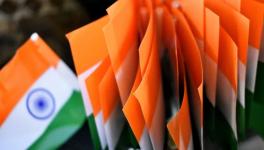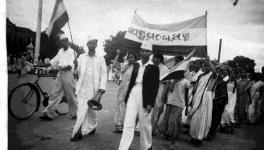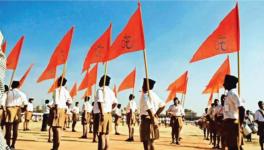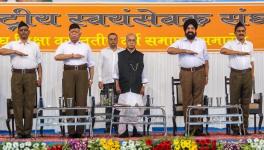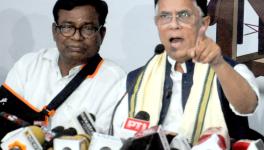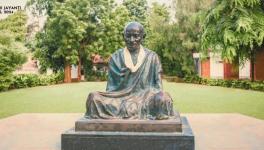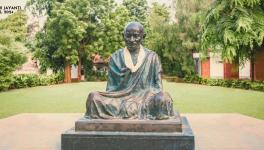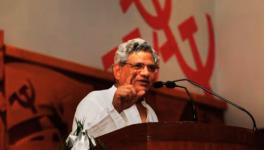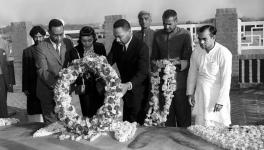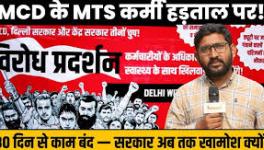Odisha Assembly Passes Resolution to Include Non-Violence in Preamble
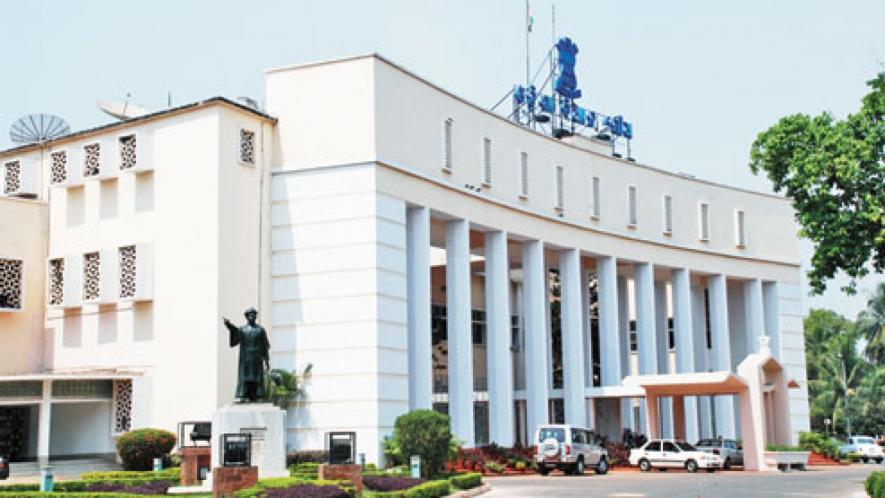
Image Courtesy: Odisha Diary
In a significant development, on 23 March 2021, the Naveen Patnaik-led Odisha government passed a resolution in the state Assembly to include non-violence in the Preamble of the Constitution. The resolution marked the commencement of a year-long celebration of the centenary of Mahatma Gandhi’s first visit to the state on 23 March 1921.
One of the objectives of Gandhi’s historic visit was to enlist people’s support towards achieving Swaraj in one year. He sought to intensify the non-cooperation movement and collect funds from Odisha for the Lokmanya Tilak Swaraj Fund which had set a target of raising Rs. 1 crore from across the country.
The Odisha Assembly devoted the forenoon session of its ongoing Budget Session to discuss the rich legacy of Gandhi’s first visit to the state. Hearteningly, members cutting across party lines took part in it. This was when the Assembly unanimously adopted the resolution on non-violence, a suggestion that came from the Chief Minister when 150th birth anniversary of Gandhi was celebrated.
The decision harkens to a session of the Constituent Assembly held seventy-three years ago, on 17 October 1949. On that day, Shibbanlal Saxena had moved an amendment urging the Assembly to incorporate Gandhi’s name as well as non-violence in the Preamble. However, some members of the Assembly requested him to withdraw it. They argued that if Gandhi’s name was added to the Preamble, and a future government removed his name, it would constitute an offence to his memory and legacy. Therefore, the amendment was withdrawn.
Unprecedented celebrations
The centenary of Gandhi’s first visit to Odisha was celebrated across the state by the government, civil society groups, numerous voluntary organisations, and other bodies with enthusiasm and dedication that was hardly ever seen in recent history. They organised special marches carrying Gandhi’s photographs, held prayer meetings, appealed to people to resist alcohol and other intoxicants, and stressed interfaith and communal harmony as the way to defeat divisive forces.
All prominent Odia dailies published well-researched opinion pieces on the historic visit and brought out special pages that gave fascinating details of what Gandhi did and said when he arrived in Cuttack and elsewhere in 1921. One leading daily, Samaja, established in 1919 by Utkalmani Gopabandhu Das—on whose invitation Gandhi had visited Odisha in 1921—wrote an illuminating editorial, “Centenary of that Welcome Visit”.
Many authors recalled that when Gandhi arrived in Cuttack on 23 March 1921 he was greeted by thousands of people who had come from far and wide, with cries of Vande Mataram and Hindu-Musalman ki Jai. The latter slogan captured the spirit of that era and the Khilafat Movement, which underlined unity and solidarity among Hindus and Muslims and affirmed fraternity.
Most TV channels of the state invited representatives of all political parties to discuss multiple dimensions of Gandhi’s visit and their contemporary relevance. The magnitude of celebrations and the scale of participation from cross-sections of society was so impressive that a leading Odia daily, Sambad, said on its front page: Gandhi was all Around Odisha.
Gandhi and Odisha
Gandhi learned about Orissa [now Odisha] when he returned from South Africa to India in 1915, due to the recurrent famines in the then British province, which were causing widespread havoc, mass starvation, and thousands of deaths. In a speech delivered on 25 March 1938 near Puri, he said, “As soon as I returned to India I began to hear of Orissa’s poverty and famine. We raised an amount and sent over Thakkar Bapa in the capacity of a servant of this afflicted province and organized famine relief”.
Odisha a mere geographical expression
Ten months before his visit to Orissa, in 1920, Gandhi wrote, “Most of us perhaps do not even know where Orissa is…it is a mere geographical expression...For, even whilst India is pulsating with a consciousness of national life, we know little of Orissa.” He also wrote, “Orissa, in spite of its enjoying the honour of having one of the great places of pilgrimage, viz., Jagannath Puri, appears to be a godforsaken country.”
He wrote that his first visit to Orissa, the poorest province of India, would complete his famous tour of the country. Subsequently, Gandhi visited Orissa seven more times and wrote extensively about his experiences, which included his understanding that the poverty of the people in Odisha was worse than in Champaran, where Gandhi had believed he had seen the worst kind of poverty.
He attributed Odisha’s poverty and backwardness to many factors, including the frequent natural disasters such as the floods that ravaged its different parts.
March to abolish Untouchability
During a visit to Odisha in 1934, Gandhi undertook a march in which he decided to cover some distance near Puri by train. On learning that some Sanatani Hindus had threatened to kill him during this yatra, he decided to cover the entire distance by foot and face their threat with non-violence. The objective of that march was to mobilise people against untouchability so that this social evil could be abolished. He wished to see temples in the state open to those who were being denied access to them on grounds of their caste status.
In the same speech of 25 March 1938, he said, “I also realised that if I could serve Orissa somewhat I would by so doing serve India.” He then emphasised: “Orissa became for me a place of pilgrimage—not because the temple of Lord Jagannath was there—for it was not open to me, as it was not open to the Harijans, but because I thought of a novel way of touring the country for the sacred mission of the abolition of untouchability.”
Gandhi and Jagannath Temple, Puri
Gandhi did visit the Jagannath Temple in Puri during his first visit to Orissa in 1921, but not in 1938, on the ground that Dalits were not allowed to enter the shrine. In the same year, Kasturba, Gandhi’s wife, went into the shrine during her visit to Puri despite his advice that she should only visit up to the point that Dalits, too, were allowed. Gandhi held himself responsible for her lapse and said he had failed to convert her to the path of non-violence. He deeply regretted Kasturba’s act, and also chastised the temple priest, saying that for him “silver coin is God”.
Gandhi considered the death of an Odia as a model death
Gandhi was tremendously impressed by the stalwarts of Odia public life such as Utkalmani Gopabandhu Das and Utkal Gaurab Madhusudan Das. The latter had converted to Christianity and in 1903 set up the Utkal Sammilani to unify Odisha territory, of which parts remained in Bengal, Bihar, Madras, and the Central provinces during British rule.
Eventually, Odisha was unified and became the first province created on a linguistic basis, on 1 April 1936. Gopabandhu Das’s exemplary dedication towards the freedom struggle prompted Gandhi to say that with such selfless workers Swaraj could be achieved in one year. Deeply influenced by Madhusudan Das’s work for the cause of Dalit uplift, Gandhi wrote in 1934 that his eyes were opened by his explanation that India suffered economically because of untouchability.
Apart from great personalities, Gandhi was also moved by ordinary life, work—and even the death of ordinary Odias. One such person was Krishna Chandra Nayak, who died of snakebite in 1920 while he was distributing relief in areas devastated by famine.
When Gandhi was requested to send a condolence message to his bereaved family, he responded that he would send a congratulatory message instead, because Krishna Nayak died while serving the famine-affected. He considered Nayak’s death a model death and wished for such a death for himself.
Gandhi chose only two deaths as “model deaths” and nursed the desire for such an end. One was Krishna Chandra Nayak’s and the other of Ganesh Shankar Vidyarthi.
Demand to amend plaque in Puri
The legacy of Gandhi’s visit to Odisha endures. The gusto and enthusiasm with which the centenary of his first visit was celebrated speak volumes for how much people respect his life and work. In Puri, there is a plaque in the railway station that states that Gandhi did not want to enter Jagannath temple in 1938 on grounds that it was closed to Dalits. The priests of the temple demanded to include in this plaque his visit to the shrine in 1921. Puri district officials recommended that the VIP road in the town should be named after Mahatma Gandhi.
Discussions in the Assembly
Congress MLA Narasingha Mishra, while speaking on the centenary of Gandhi’s visit to the state Assembly, said that the followers of Nathuram Godse are ruling the country [today] and the worldview of Gandhi should be taught in educational institutions. The leader of opposition Pradipta Kumar Naik, a BJP MLA, opined that the rising sale of liquor in the state and illegal cattle trafficking are what tarnish Gandhi’s legacy.
Naveen Patnaik said that “Of all the things that this country has given to the world, Gandhi’s philosophy and message stand out as one of its greatest contributions,” Stating that his non-violent resistance ignited many peaceful movements across the world Patnaik felt it most appropriate to recall that idea in the land of Kalinga, which inspired emperor Ashoka to renounce war. He also cited Martin Luther King, who had said, “Gandhi was inevitable. If humanity is to progress, Gandhi is inescapable. .. We may ignore Gandhi at our own risk.”
Patnaik also referred to Gandhi’s commitment to pluralism and his message of tolerance and harmony and stressed that those values associated with his life remained relevant for the world confronting increasing polarisation and divisiveness. He quoted Gandhi’s Talisman which gives primacy to the poorest and guides decision makers to go beyond self and determine the usefulness of their actions from the perspectives of the lowly and lost.
Comprehensive celebrations of the centenary of Gandhi’s first visit to Odisha are unprecedented in the history of the state and perhaps the country. It should be studied at the national level why this centenary and the resolution to include non-violence was hardly even noticed by national print and digital platforms.
The author was Press Secretary to President of India late KR Narayanan. The views are personal.
Get the latest reports & analysis with people's perspective on Protests, movements & deep analytical videos, discussions of the current affairs in your Telegram app. Subscribe to NewsClick's Telegram channel & get Real-Time updates on stories, as they get published on our website.









